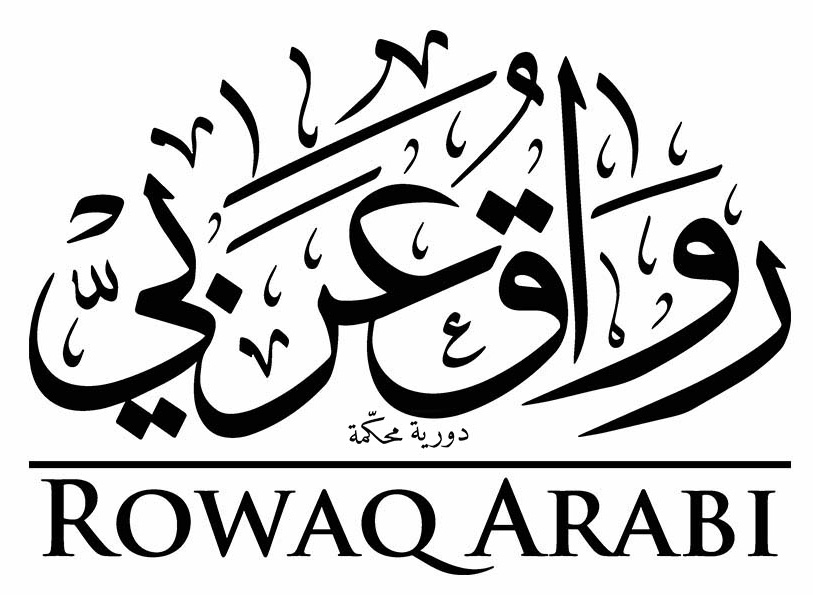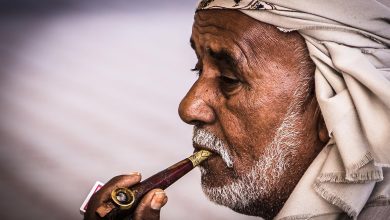Introduction: The Political Economy of Authoritarianism in the Arab Region

Citation: Maher, Hamoud (2023) ‘Introduction: The Political Economy of Authoritarianism in the Arab Region’, Rowaq Arabi 28 (1), pp. 1-5, DOI: 10.53833/DGHZ7154
In the field of political economy, opposing scholars on the left and the right agree on the fact that peoples of the Arab region are among the most exploited in the world. On one hand, a Marxist approach would argue that ‘accumulation by dispossession’ is at a peak in historical terms.[1] Ruling elites of the region, whether civilian or military, have honed the practice of accumulating wealth (directly and indirectly) through violent means from the hands of the people, who by the day are becoming increasingly impoverished and deprived of their rights. On the other hand, a ‘free market’ approach, whether classical, neoclassical or neoliberal, would also argue that ‘cronyism’ is at a historical peak.[2] And again in other words, the elites are deeply involved in economic corruption that is both making the poor poorer and harming capitalism itself.
To understand in simple terms the degree to which economic exploitation is affecting rights and freedoms and fostering oppression in the region, we can temporarily wear a media lens. By doing so, we can find that there is consensus within both the left and right approaches on the extent of the situation’s precariousness. Jonathan Hardy critically explains that there is a well-established ‘conventional’ political economy tradition, which asserts that a ‘free market’ ensures the existence of free media that are independent of governments, and therefore are free to produce. This school of thought also believes that the ‘free market’ ensures the media is representative of society, since media enterprises must respond to their audiences’ interests. However, what actually happens is that media investors make arrangements with governments, for the reason that they share agendas and benefit mutually from cooperation.[3] Hardy’s critical view of the neoliberal media is interestingly also supported by the ‘free-market’ media economist Gillian Doyle, who argues that since the early days of printing, the ability to communicate with mass audiences has been subject to many forms of intervention by state authorities; media industries are affected not only by ‘normal’ economic and industrial policy concerns, such as growth and efficiency, but also by a range of special considerations that reflect the socio-political and cultural importance of mass communication.[4] In the end, the assumption of democratisation, in the sense that the more private media we have, the more likely democracy and freedoms will prevail, seems very challenging if not impossible in terms of its materialisation on the ground. And in this sense, the Arab Region, as we may casually say, actually has an ‘abundance’ of private media, while violations of freedoms and rights are at a historical high.
Now by removing the media lens and returning to economics, we can see evidence from the work of Ishac Diwan on Egypt, one of the authoritarian examples in the region, that the bulk of bank loans always went to politically connected private companies.[5] And I see that this exchange of interests between business and political elites, whether military or civilian, is highly common in the region’s neoliberal economies. Angela Joya, however, makes a distinction between liberalisation and neoliberalisation in her work, which is important to address in our research and analysis. For her, liberalisation refers to the elimination of constraints on economic activities and can be understood as a process of ‘negative reforms’, in the sense of removing legislations and regulations. She distinguishes neoliberalisation as a project that entails far more substantive ‘reforms’ that target the nature of the state itself, and thus are far more ambitious and radical than mere liberalisation.[6] To give an example, commissioning infrastructure projects to private contractors through transparent tenders could be liberalisation. It becomes neoliberalisation when the same projects are commissioned to private contractors with ‘direct orders’ from the government.
It is obviously challenging to afford running an oppressive regime, and even more challenging to sustain it for a long period. In this context and given the ‘failure’ of democratisation in the Arab region, the sustainability of oppression appears to be a dynamic that needs further examination in this part of the world. There is a need to focus on topics that address the economic sustainability of political oppression in the Arab region, highlighting the similarities and differences among coexisting models of authoritarianism, as well as internal and external support mechanisms. In response to the call for papers for this ambitious special issue addressing this challenge, I have received submissions of manuscripts that discuss topics that are geographically diverse, on Egypt, Sudan, Algeria, Morocco, Saudi Arabia, and the Gulf Cooperation Council (GCC). These submissions are thematically diverse as well, as authors addressed the topics of rentier economy, corruption, the developmental state, Arab monarchies, access to basic services, militarism, para-militarism, and the significant deterioration of rights and freedoms after the Arab Uprisings.
Before reading this special issue, given the natures and variations of the submitted manuscripts, I invite the readers to wear a particular ‘political economy lens’ that will facilitate navigating this set of specialised articles. This (imperfect) lens is defined by the striking differences between the sets of groups of states in the Arab Region, where the oil-rich ones are able to distribute wealth to their population to buy social peace and pre-empt greater societal demands. As for the states with more modest per capita oil production, they tend to allocate most of the rents to their elites and to use a large portion to finance a repressive apparatus that establishes and protects their rule. This socio-politico-economic framework of analysis is based on the work of Melani Cammett et al, where they divide the region’s countries into three categories: 1) Resource-Rich Labour-Poor (RRLP), which are the countries with high per capita oil rent set at US$10,000. This category includes the GCC monarchies in addition to Libya, the latter now ruled by warlords and poorly fitting into this group. 2) Resource-Rich Labour-Abundant (RRLA), which are the countries where oil production per capita varies between US$250 and 10,000. This category includes Algeria, Iraq, Sudan, Syria, and Yemen. And finally, 3) Resource-Poor Labour-Abundant (RPLA), which are the countries with no oil production or below US$250 per capita. This category includes Egypt, Jordan, Lebanon, Morocco, Palestine, and Tunisia.[7] This (again imperfect) lens will help readers generally understand the different forms of the political economy of authoritarianism in the region, while in particular, give them a clear idea of how, as a few examples among others, the republican armies behaved following the Arab Uprisings, and why the Moroccan monarchy is strikingly different from those of the GCC.
This special issue consists of seven articles: this introduction, one book review, one views article, and four research papers. All were published on different dates without a particular order. After reading this introductory article, I highly recommend reading the book review article first as it sets the stage for a better understanding of a few facts and analysis that will facilitate the understanding of the remainder of the articles in the wider geopolitical picture.
The book review is written by Osama Diab, in which he critically discusses Adam Hanieh’s ‘Money, Markets, and Monarchies’, with a focus on ‘authoritarianism as capital accumulation’. In what I see, as introduced above, Diab shows how Hanieh’s book is an impressive wealth of data and information presented within a cogent theoretical and conceptual framework. He sees the book as an indispensable reference for anyone who is not only interested in the political economy of the Gulf and the Arab region, but also in the global political economy. This is especially the case since the book’s main premise is of the Gulf as a key constitutive agent of the Global rather than merely constituted by it, as most may think. In this sense, reading Diab’s review will help us understand the GCC’s geopolitical power in the entire region, as a global player, not only a partner in authoritarianism. In other words, I see that Diab’s analysis of Hanieh’s book works both within my above suggested framework of the RRLP countries while also expanding upon it, encompassing a wider portrayal of the GCC as an engineer of global politics, not a mere player.
Now in the order of publication dates, we have the ‘Views’ article of Robert Springborg, which questions the sustainability of today’s Egyptian economy, or in his words the ‘Sisinomic Development Model’. Springborg glances through the history of Egypt’s models for economic development since 1952, which depended heavily on external financial support. Nasser had to turn to the Soviets when his model of Arab Socialism dissolved into non-sustainable budgetary and balance of payments deficits. Sadat’s infitah, one of the world’s earliest versions of neoliberalism, similarly failed to generate adequate economic growth. He was thus forced in the mid-1970s to appeal for aid to the newly enriched Gulf oil exporters and to the Americans to cover financial shortfalls. Then there was Mubarak’s version of cronyism, which similarly failed to kickstart the economy. A crisis forced him to support the American effort to dislodge the Iraqi army from Kuwait in return for a write down of some $30 billion in foreign debt. The economic legacy inherited by Sisi was thus neither compelling in form nor in results. It is therefore not surprising that he chose to adopt yet another economic model, nor is it surprising that, given the track record of its predecessors, it has failed to produce the goods.
Delving into case studies of the political economy of authoritarianism, Mohamed El Aoufi addresses the Maghreb region where he analyses public expenditure on security in comparison to development in both Morocco, an RPLA country and Algeria, an RRLA one. The study relies on both quantitative and qualitative measures of military spending and spending on three social policies (social protection, health, and education), approaching the issue from a political economy perspective of militarisation and a holistic analysis of security. El Aoufi concludes that military spending in the two countries is rapidly increasing despite its adverse impact on social policies, due to the Moroccan-Algerian arms race as well as the military elite’s tangible grasp on power in Algeria and the pressure it exerts in Morocco.
Asmaa Elbanna’s study in this issue could be considered an examination of Hanieh’s arguments. She examines the relationship between economic reforms and political freedom, through analysing the ‘Vision 2030’ of Saudi Arabia, an RRLP country, and Mohamad Salman’s promise of a democratic transition. Vision 2030 aims to engender structural economic change in the leading Gulf country and promises greater transparency, accountability, citizen engagement, and more open economic and social spaces. Drawing on the concepts of democratic transition, the rentier state, and the authoritarian bargain as a theoretical framework, the study adopts a descriptive analytical approach to understand the relationship between economic reform and democratisation. Elbanna concludes that the Saudi regime tactically implements economic reforms for the purpose of containing internal and external changes, monopolising power, and endowing the regime with a new legitimacy. This is implemented through the reconstitution of elites, the centralisation of power, the continued suppression of the opposition, and ensuring the stability and perpetuation of the regime’s authoritarianism.
In his study for this issue, Nabil Zegaoui examines the concept of ‘authoritarian development’ in the Kingdom of Morocco, an RPLA country, by examining the promises and contradictory rocky development path of the palace’s ‘developmental state’. The authoritarian nature of the Moroccan developmental model is examined by Zegaoui in light of modernisation theory and developmental authoritarianism, guided by the theory of competitive authoritarianism. Zegaoui finds that while the state sets the rhythm for the development of society, it itself is impervious to development. The constraints on citizens’ economic and social empowerment are largely attributable to the fact that the political transformation of the state has been excluded as a possibility. In particular, the form of development in Morocco constitutes an extension of political authoritarianism that is responsible for the failure of economic and social development.
Closing this special issue with a study on the political economy of authoritarianism in Sudan, an RRLA country, Fouad Aalouane questions the future of Arab democracy under the rentier economy. Showing how this economic model has long been a key tool for Arab authoritarianism, Aalouane posits that rentierism is a grave matter as it not only hinders economic liberalisation but also disrupts the development of democracy. To better understand the factors that shape and sustain the rentier economy as a system of oppression, Aalouane focuses on the case of Sudan, where rentierism is deeply embedded. He sheds light on the challenges impeding the transfer of power from the military establishment to civilian elites, given the resilience of the rentier economy and the prevalence of negative practices that strengthen authoritarianism, such as the spread of clientelism and endemic levels of corruption. Obviously but sadly, the study finds that it is impossible to build a democratic system in the shadow of the rentier structure. Nevertheless, it discusses ways to dismantle the rentier economy in Sudan to ensure the emergence of a productive state by moving beyond the rentier social contract to a new social pact.
Table of Contents
Introduction: The Political Economy of Authoritarianism in the Arab Region
Maher Hamoud (Editor-in-Chief)
Book Review: Authoritarianism as Capital Accumulation in Adam Hanieh’s ‘Money, Markets, and Monarchies’
Osama Diab
Views: Sustainability of the Sisinomic Development Model
Robert Springborg
Security versus Development in the Maghreb: A Study of the Cases of Morocco and Algeria
Mohamed El Aoufi
Examining the Relationship between Economic Reform and Political Freedom: Vision 2030 and Democratic Transition in Saudi Arabia
Asmaa Elbanna
Authoritarian Development in Morocco: The ‘Developmental State’ without State Development
Nabil Zegaoui
The Future of Arab Democracy under the Rentier System: The Case of Sudan
Fouad Aalouane
[2] Lambsdorff, Johann Graf, Markus Taube, and Matthias Schramm eds. (2005) The New Institutional Economics of Corruption (New York: Routledge).
[3] Hardy, Jonathan (2014) Critical Political Economy of the Media:AN Introduction (New York: Routledge).
[4] Doyle, Gillian (2013) Understanding Media Economics, 2nd edition (London: SAGE).
[5] Diwan, Ishac, and Marc Schiffbauer (2018) ‘Private Banking and Crony Capitalism in Egypt’, Business and Politics 20 (3), pp. 390-409.
[6] Joya, Angela (2020) The Roots of Revolt: A Political Economy of Egypt from Nasser to Mubarak (Cambridge: Cambridge University Press).
[7] Cammett, Melani et al (2015) A Political Economy of the Middle East (New York: Routledge).
Read this post in: العربية





